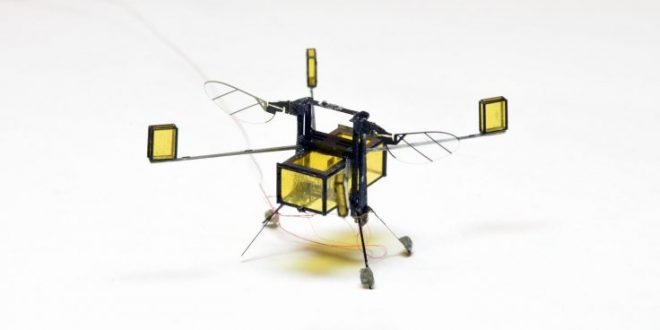Scientists have revealed a nature-inspired RoboBee that can dive into water mid-flight, and launch itself back out for a safe landing.
The design uses a ‘Goldilocks combination’ of wing size and flapping rate, allowing for a system that’s 1,000 times lighter than any other aerial-to-aquatic robot, according to the creators.
Once it dries off, the “robo-bee” can repeat the whole routine—or go back to flying. But engineering for water wasn’t easy.
The scientists realized early on that their 175-milligram bot needed help staying upright underwater. So they added stabilizing cross beams and slowed down how quickly it beat its wing: In air, the wings flap about 250 times per second; in water, they average about nine beats per second.
Any faster than that, and the bot starts to tilt and twist and can even fall apart. The bot also needed help breaking through the water’s surface tension, so the researchers figured out how to give it a push with an electrical device that converts water into oxygen and hydrogen, plus a “sparker” that can ignite these gases. After 2 minutes, the gases build and make the bot buoyant enough to get its wings out of the water.
Then the spark blows up the gases, and the bot shoots up about 35 centimeters at a speed of more than 2 meters per second, the researchers report today in Science Robotics. The bot can’t fly again until it dries out, but its design helps it glide to a safe landing. And though it’s unlikely to perform at Sea World, this versatile bot may one day help with ocean search and rescue, fish surveys, and environmental monitoring.
Agencies/Canadajournal
 Canada Journal – News of the World Articles and videos to bring you the biggest Canadian news stories from across the country every day
Canada Journal – News of the World Articles and videos to bring you the biggest Canadian news stories from across the country every day



